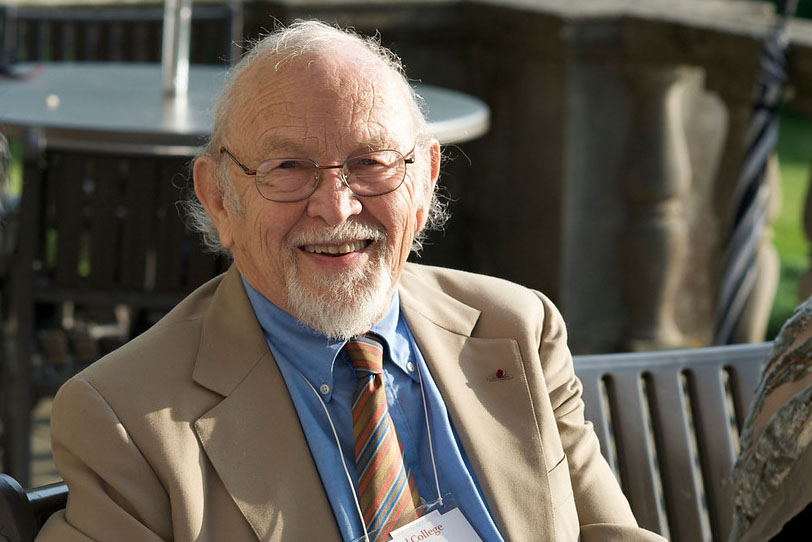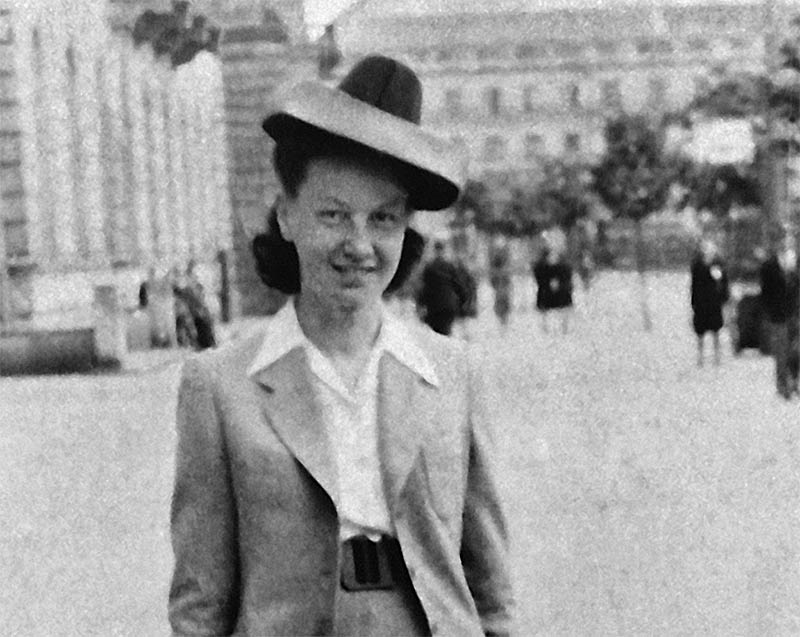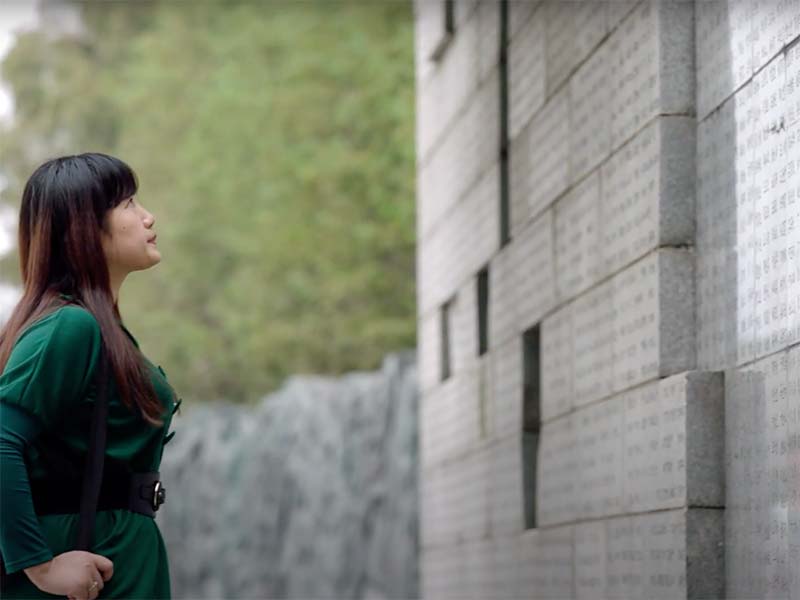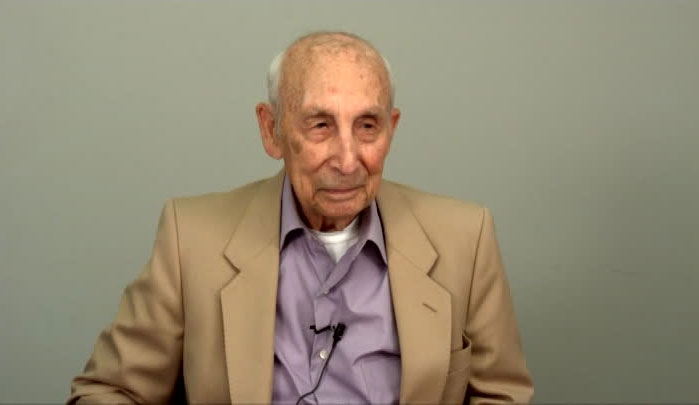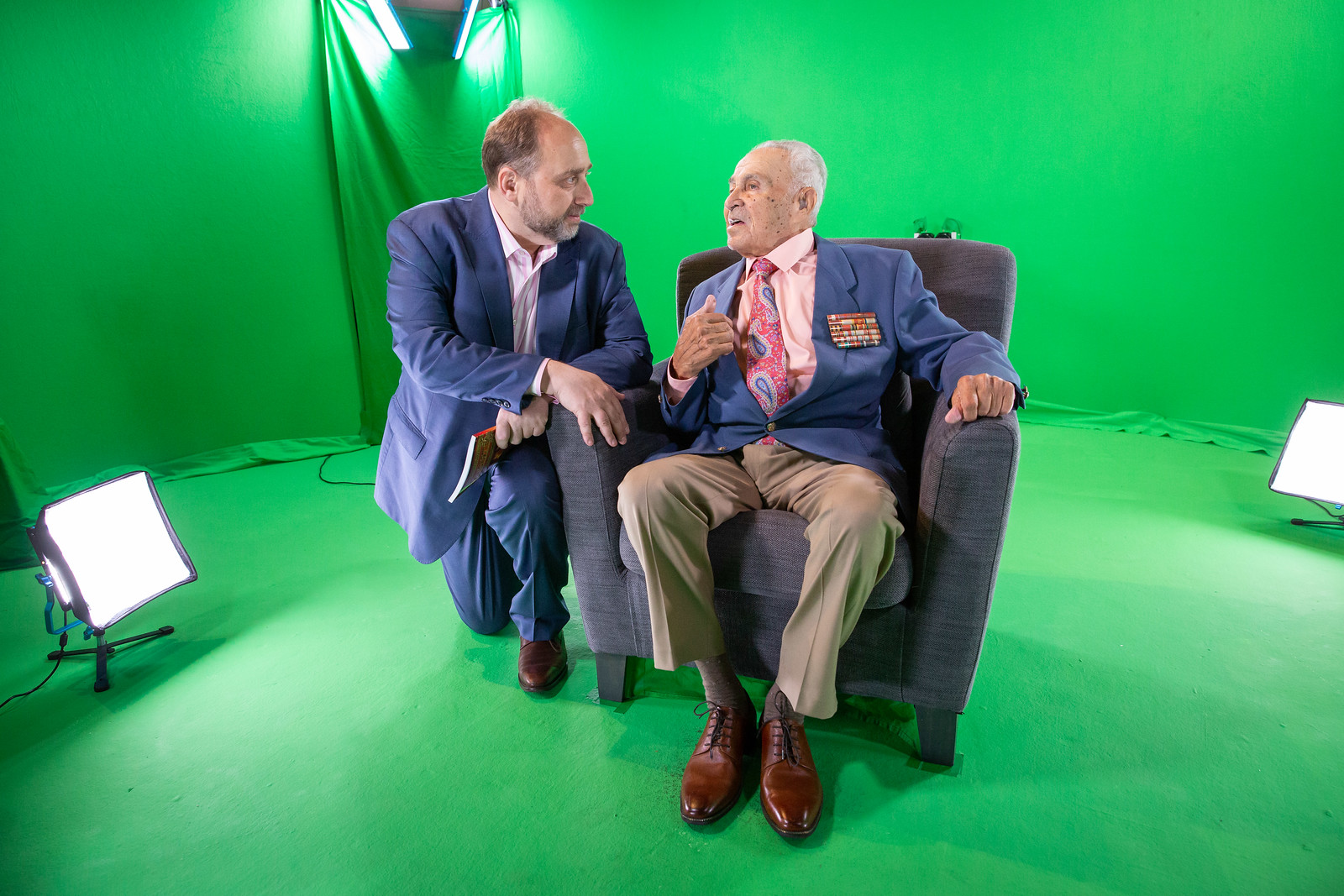The Holocaust
The largest audiovisual collection of its kind in the world, the Holocaust Collection is composed of 55,173 WWII era testimonies of Jewish survivors, political prisoners, Sinti and Roma survivors, Jehovah's Witness survivors, survivors of eugenics policies, and gay male survivors, as well as rescuers and aid providers, liberators, and participants in war crimes trials.
About the Collection
The Visual History Archive contains 55,173 audiovisual testimonies of Holocaust witnesses. The majority of them were recorded by USC Shoah Foundation between 1994 and 2001. Through the “Preserving the Legacy” initiative, the Institute has partnered with several organization with their own Holocaust testimony collections to index and preserve them in the Visual History Archive. Those partners include the Blavatnik Archive Foundation, Florida Holocaust Museum, Holocaust Memorial Center Zekelman Family Campus, Holocaust Museum Houston, the Jewish Family and Children's Services of San Francisco, the Museum of Jewish Heritage, The Azrieli Foundation in Toronto as well as several other Canadian organizations.
The majority of the interviews are with Jewish Holocaust survivors. The archive also includes the testimonies of political prisoners, Roma (Gypsy) survivors, Jehovah's Witness survivors, survivors of eugenics policies, and gay male survivors as well as rescuers, liberators, and participants in war crimes trials.
USC Shoah Foundation interviews were conducted by a single interviewer, while JFCS interviews, for example, were in many instances conducted by two. Interviewees were typically encouraged to share their stories in chronological order, recalling memories from before, during, and after World War II. At the end of the interview, they displayed photographs, documents, and artifacts pertaining to their family and wartime experiences, and then introduced family members and friends on camera. Around 159 testimonies conclude with walking interviews, filmed at sites of former concentration camps, ghettos, mass graves, hiding places, or in front of prewar family homes.
The indexing of each interview enables researchers to search in detail for the people, places, events, and experiences described in each one. For example, the archive includes over 2 M+ name records—those of the interviewees themselves, their family members and anyone else they talk about in the interview. The indexing terms include approximately 47,000 specific geographic locations, not only from Europe but from all over the world, and around 8,000 experiential terms used to describe the huge variety of events, experiences, organizations, and other subjects
Brief Historical Background
Setting the Stage
After World War I, Germany was in shambles and its people, led to believe they were winning the war right up until defeat, were in shock. Their leader, the Kaiser, was forced to step down and the Treaty of Versailles led to significant loss of land and citizens. In February 1919, a new German government was created: the Weimar Republic. The constitution of the Weimar Republic was very progressive and allowed women the right to vote, freedom of speech, and freedom of religion. However, as an emergency measure in the name of national security, Article 48 of the Weimar Constitution allowed for the suspension of these civil liberties.
In 1932, Adolf Hitler, leader of the nationalistic, antisemitic and racist National Socialist German Workers’ Party (Nazi Party), was elected to the German Reichstag (Parliament). In January 1933, he was appointed Chancellor by President von Hindenburg. After the Reichstag fire, Hitler manipulated Article 48 and passed the Enabling Act, which allowed him to pass laws without the approval of the Reichstag or the President. This was the beginning of the end of the Weimar Republic. The Nazis established a single party dictatorship referred to as the Third Reich. From 1933 until 1939, the Nazi government enacted hundreds of increasingly restrictive and discriminatory laws and decrees that banned Jews from all aspects of German public life.
Genocide
“The Holocaust was the systematic, bureaucratic, state-sponsored persecution and murder of six million Jews by the Nazi regime and its collaborators. Holocaust is a word of Greek origin meaning ‘sacrifice by fire’” (U.S. Holocaust Memorial Museum).
During World War II, the Nazis systematically targeted Jews in Nazi occupied territories. Jews were forced to wear identifying symbols, relocate to heavily crowded ghettos, and participate in forced labor. Millions of Jews were murdered during the Holocaust. The Nazis also targeted racial, political, or ideological groups deemed “inferior” or “undesirable” – “Roma (Gypsies), gay men, Slavic peoples, the mentally and physically disabled, Socialists, Communists, and Jehovah’s Witnesses. Within several years, mass murder became the official Nazi policy (officially organized at the 1942 Wannsee Conference). By then, the Nazis had already deployed Einsatzgruppen (mobile killing units) to massacre Jewish communities in Poland and the Soviet Union. The Nazis also used poisonous gas, in vans and later in gas chambers at six death camps (Chelmno, Auschwitz, Majdanek, Belzec, Sobibor, and Treblinka). Even when their defeat was imminent, the Nazi leadership committed resources to the destruction of Europe’s Jewish population. Prisoners were forced to evacuate in what are now known as Death Marches.
Fall of the Third Reich
When the Allied troops (led by the United States, United Kingdom, and Soviet Union) defeated the Nazis, they encountered evidence of genocide: documentation, witnesses, mass graves, and concentration and death camps. Europe was in disarray; millions were displaced, and entire cities were destroyed. Displaced persons camps were established to house Jewish survivors. Many Jews continued to face antisemitism and violence and most Jews decided to emigrate. The Nuremberg Tribunal was established and tried 22 members of the Nazi leadership for war crimes but the majority eluded justice.
Ruth Westheimer on choosing her career
In this clip from her testimony, recorded in New York in 1998, Ruth Westheimer reflects on her studies in the United States after WWII and her long career as “Dr. Ruth.”
Survivors and Family
Survivors and family can receive a link to view the testimony of relatives online at no cost.
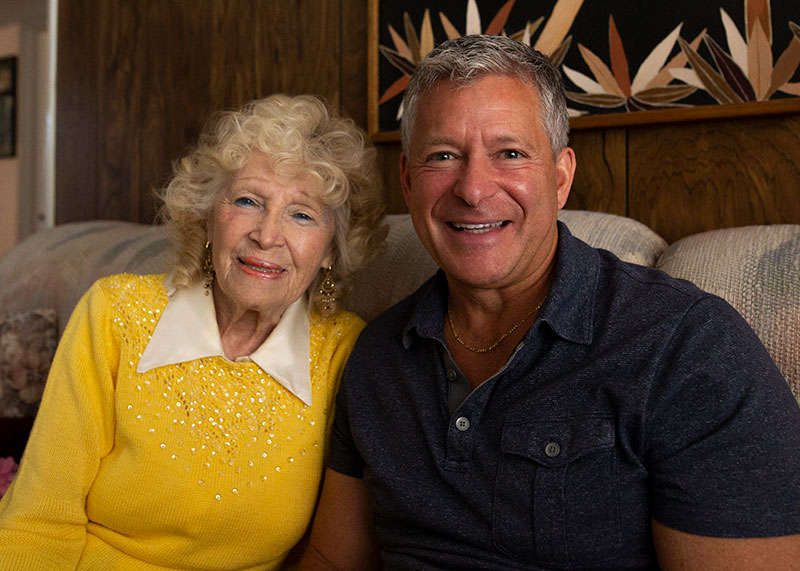
Collecting New Survivor Testimonies
Time is running out. We must act now to collect the remaining testimonies of Holocaust witnesses — before it is too late. There are approximately 300 witnesses waiting to tell their stories. Your gift will help capture these testimonies while we still have the chance.
The North Africa and Middle East Project
The Institute is also in the midst of a campaign to record at least 50 testimonies from the North Africa and Middle East region, where the Nazi regime had gained a foothold during World War II. The collection includes testimonies of individuals from several countries including Algeria, Egypt, and Iran. Testimonies are given in English, French, Hebrew, Italian and Farsi.
Recent interviewees include writers, artists, scholars and activists and others who describe Jewish life in the Middle East and North Africa before World War II, experiences of antisemitism and persecution during the war such as the 1941 Farhud pogrom in Baghdad, and the impact of the European Holocaust on their lives. They also reflect on the North African and Middle Eastern Jewish communities today.
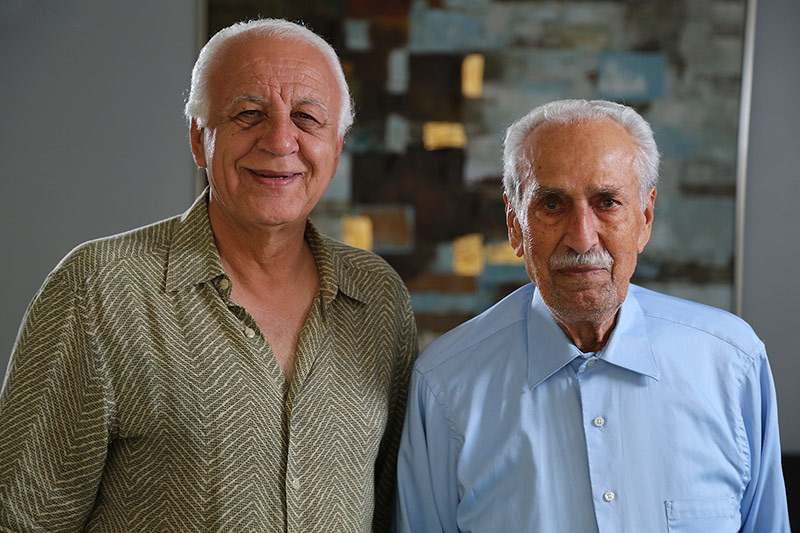
Dimensions in Testimony
USC Shoah Foundation has also partnered with USC Institute for Creative Technologies and Conscience Display to conceive and design a cutting-edge technology called Dimensions in Testimony, which enables people to interact with a projected image of a real Holocaust survivor, who responds to questions asked in real time.
With this endeavor, a handful of Holocaust survivors who have already sat before a camera for USC Shoah Foundation’s Visual History Archive are giving testimony again. This time, however, they sit before 50 cameras arranged in a rig to capture a three-dimensional recording of them telling their stories in a new way, by answering questions that people are most likely to ask. Funding for Dimensions in Testimony was provided in part by Pears Foundation and Louis. F. Smith.
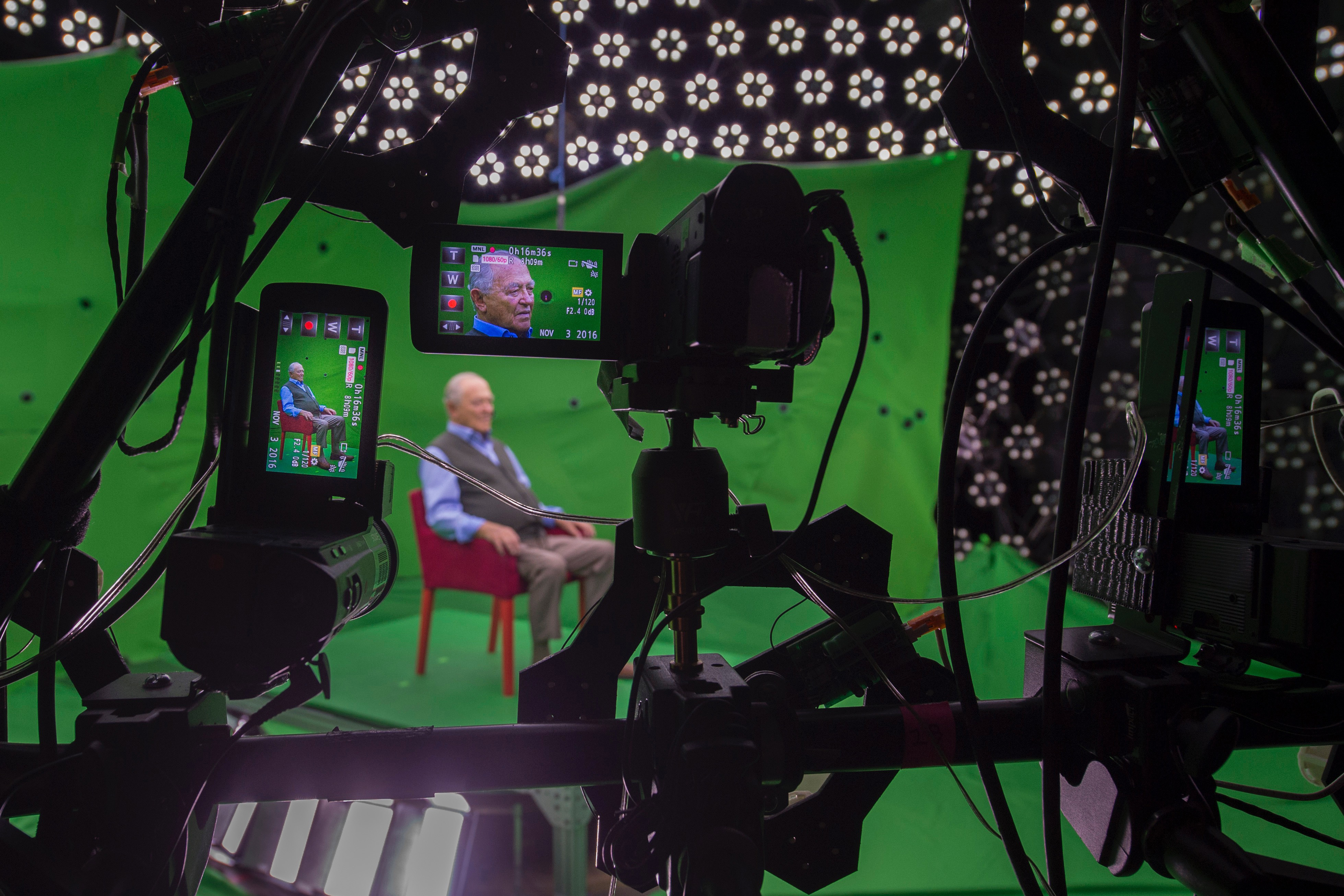
360º Testimonies
Filmed on location at authentic historic sites, 360-degree testimonies use the latest technology with a single camera that captures the interviewee and the surrounding location in a single shot. By capturing the full scene, the viewer can explore the environment while watching the survivor share his or her story, adding a dimension of meaning to the experience.
The locations might include a childhood home, a European city block that was once a Jewish ghetto, the site of a former Nazi concentration camp and other places of key significance to the survivor’s personal history. By capturing the full scene, the viewer can explore the environment while watching the survivor share his or her story.
USC Shoah Foundation has filmed 360-degree testimonies of several Holocaust survivors in these locations. One was turned into a pioneering VR film, “The Last Goodbye,” which transports viewers inside the Nazi death camp Majdanek in Poland with Pinchas Gutter, the only member of his family of four to survive the Holocaust.
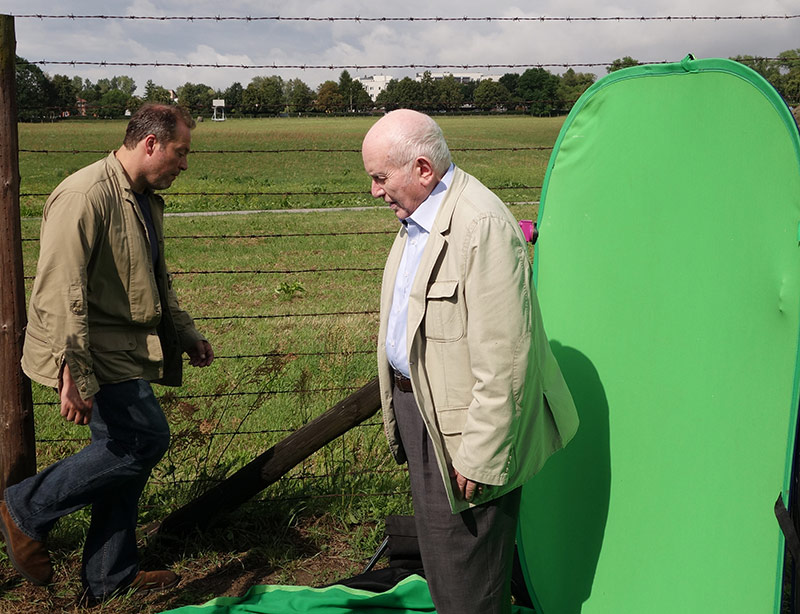
Donate to the Institute
We would love to connect with you! USC Shoah Foundation’s Annual Fund team is here to help you as you enter your philanthropic relationship with the Institute.
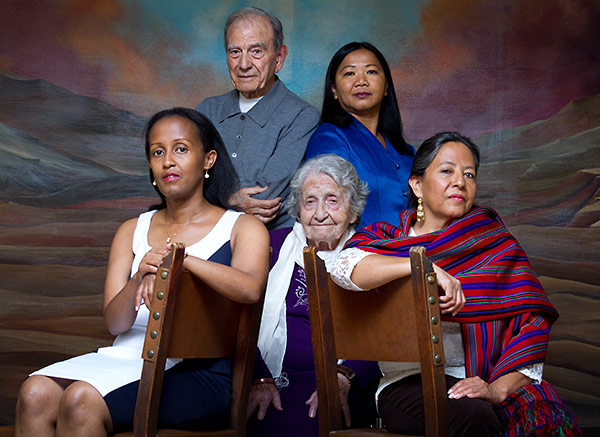
Related Articles
